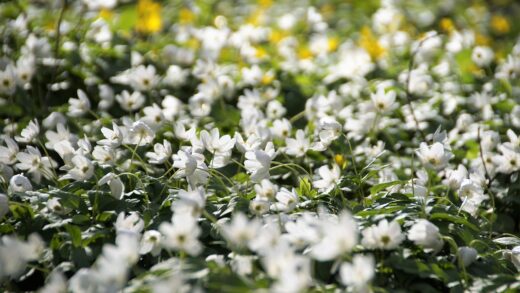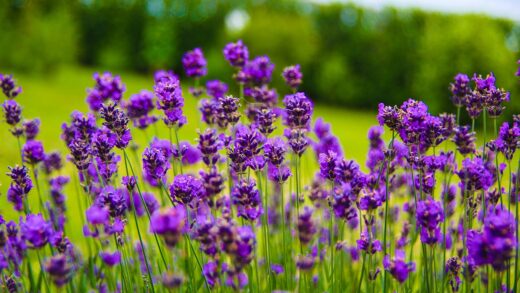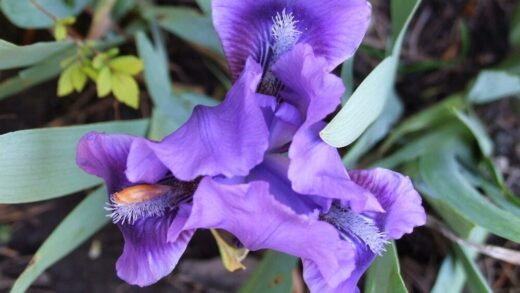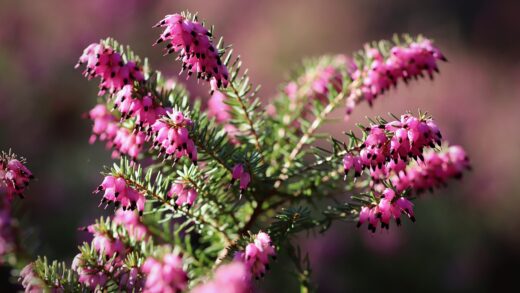Successfully wintering the persian onion is a crucial aspect of its long-term care, ensuring its return and spectacular performance year after year. These hardy bulbs are native to the mountainous regions of Central Asia, and as such, they are naturally well-adapted to withstand cold winter temperatures. In fact, they require a period of cold dormancy, a process known as vernalization, in order to trigger the biochemical processes that lead to flowering in the spring. Therefore, for most gardeners, the process of wintering is less about providing excessive protection and more about ensuring the fundamental conditions are right for the bulbs to rest safely in the ground. The primary focus should be on protecting them from the one thing that can be fatal during winter: excessive moisture and rot.
The hardiness of persian onion bulbs means that in the vast majority of temperate climates, they can be left in the ground throughout the winter without any issue. They are typically hardy in zones 4 through 8, which covers a very wide range of gardening climates. The bulbs are safely insulated by the soil, which protects them from the most extreme fluctuations in air temperature. The key to their survival is not their ability to withstand the cold itself, but their ability to remain in a well-drained environment. Winter is often a wet season, and it is the combination of cold and wet that poses the greatest threat to the health of the bulbs.
To prepare your persian onions for winter, the most important work is actually done in the summer and autumn. After the plant has flowered and the foliage has completely died back in the summer, you should cease any supplemental watering. Allowing the soil to dry out as the bulb enters dormancy is critical. In the autumn, the only preparation needed is to ensure the area is tidy. You can remove the old, withered foliage if you haven’t already, and clear away any weeds or other garden debris from the surface of the bed. This simple act of garden hygiene helps to reduce the chances of pests or diseases overwintering in the debris.
A common question is whether it is necessary to lift the bulbs for the winter. In most climates where the persian onion is hardy, this is not necessary and is not recommended. Lifting the bulbs every year can be disruptive to their natural cycle and can increase the risk of mechanical damage. The only time you should consider lifting the bulbs for winter storage is if you live in a region with extremely wet winters and you have very heavy, poorly draining soil that you cannot adequately amend. In this specific scenario, lifting the bulbs may be the only way to prevent them from rotting.
The role of mulch
Applying a layer of mulch over the garden bed in the late autumn, after the first hard frost, can be a beneficial practice for wintering persian onions. Mulch acts as a layer of insulation, helping to regulate the soil temperature. Its primary benefit is not necessarily to keep the soil warm, but to keep it from experiencing rapid and repeated cycles of freezing and thawing. These cycles can heave the soil and can sometimes push shallowly planted bulbs up towards the surface, exposing them to the harsh winter elements. A consistent layer of mulch helps to prevent this.
More articles on this topic
The mulch also helps to conserve soil moisture, which can be beneficial in very dry winter climates. However, its most important function in many regions is to protect the soil structure. A layer of mulch can prevent the soil surface from becoming compacted by heavy winter rains and can reduce erosion. This helps to maintain the loose, friable soil structure that is so important for the health of the bulbs. It also has the added benefit of suppressing the germination of winter weeds, which means less work for you in the spring.
There are many different organic materials that can be used as a winter mulch. Shredded leaves, pine straw, bark chips, or well-rotted compost are all excellent choices. You should apply a layer that is approximately 5 to 10 centimetres thick over the entire planting area. It is best to wait until after the ground has frozen lightly before applying the mulch. If you apply it too early, when the ground is still warm, it can trap that warmth and potentially delay the bulb’s dormancy. It can also provide a cozy home for rodents, which might then be tempted to feast on your bulbs.
In the early spring, as the weather begins to warm, it is important to manage the mulch layer. If you have applied a very thick layer, you may need to gently pull some of it back from the areas where the allium shoots will be emerging. This will allow the sun to warm the soil more quickly and will ensure that the new growth is not obstructed. A lighter mulch, such as compost or shredded leaves, will often break down over the winter and can simply be left in place to continue enriching the soil.
Winter care in containers
Wintering persian onions that are grown in containers requires some additional considerations compared to those grown in the ground. The soil in pots is much more exposed to the ambient air temperature and does not have the large thermal mass of the earth to insulate it. This means that the soil in a container can freeze much more quickly and to a much deeper level than the soil in a garden bed. While the bulbs are cold-hardy, freezing solid in a pot can be more stressful and potentially damaging than being in the ground.
More articles on this topic
To protect container-grown persian onions during the winter, you need to provide some form of insulation for the pot. One simple method is to move the pot to a more sheltered location, such as against a house wall or in an unheated garage, shed, or cold frame. This will protect it from the harshest winter winds and temperature fluctuations. If the pot must remain in an exposed location, you can wrap it in bubble wrap or burlap to provide an extra layer of insulation for the root ball.
It is also crucial to ensure that the container has excellent drainage. Waterlogged soil that freezes can be fatal to the bulbs. Before the winter rains begin, check that the drainage holes in the bottom of the pot are not blocked. You may also want to elevate the pot slightly by placing it on “pot feet” or bricks. This allows excess water to drain away freely and prevents the pot from sitting in a puddle of cold water or ice.
Watering during the winter should be done very sparingly, if at all. The aim is to keep the soil just barely moist, not wet. In many climates, natural precipitation will be sufficient. If you are keeping the pot in a location where it does not receive rain, such as a garage, you will need to check it occasionally and provide a small amount of water perhaps once a month, just enough to prevent the soil from drying out completely. The goal is to keep the dormant bulb alive, not to encourage any growth.
Protecting against winter pests
While most insect activity ceases during the cold winter months, there are some pests, particularly rodents, that can be a problem for dormant bulbs. Voles, mice, and squirrels can all be attracted to bulbs as a food source, and they may tunnel underground or dig down from the surface to find them. If you have a known problem with these pests in your garden, it may be worth taking some preventative measures to protect your persian onion bulbs.
One effective method of protection is to plant the bulbs in a wire cage. You can create a cage out of hardware cloth, which is a sturdy wire mesh with small openings. You can either line the planting hole with the mesh before placing the bulbs inside, or you can create a complete basket to enclose the bulbs. This provides a physical barrier that the rodents cannot chew through. While this involves more work at planting time, it can be a very effective long-term solution in areas with high pest pressure.
Certain repellents can also be used to deter rodents. Sprinkling sharp grit or gravel into the planting hole and around the bulb can help to deter digging pests. There are also commercially available granular repellents that contain ingredients that are distasteful to rodents, such as castor oil. These can be applied to the soil surface around the planting area in the autumn. Some gardeners also have success with interplanting alliums with other bulbs that are known to be repellent to rodents, such as daffodils (Narcissus) or fritillaries.
Fortunately, the same sulfurous compounds that make alliums unpalatable to deer and rabbits also make them less appealing to rodents compared to other bulbs like tulips or crocuses. Therefore, while damage is possible, it is often less of a concern for persian onions than for other spring-blooming bulbs. By maintaining a tidy garden and removing potential hiding places for rodents, such as piles of leaves or wood, you can also help to reduce the local population and minimize the risk of your bulbs becoming a winter snack.


















